Is Ellen G. White a true prophet of God?

At that time Michael shall stand up, The great prince who stands watch over the sons of your people; And there shall be a time of trouble, Such as never was since there was a nation, Even to that time. And at that time your people shall be delivered, Everyone who is found written in the book. Daniel 12:1
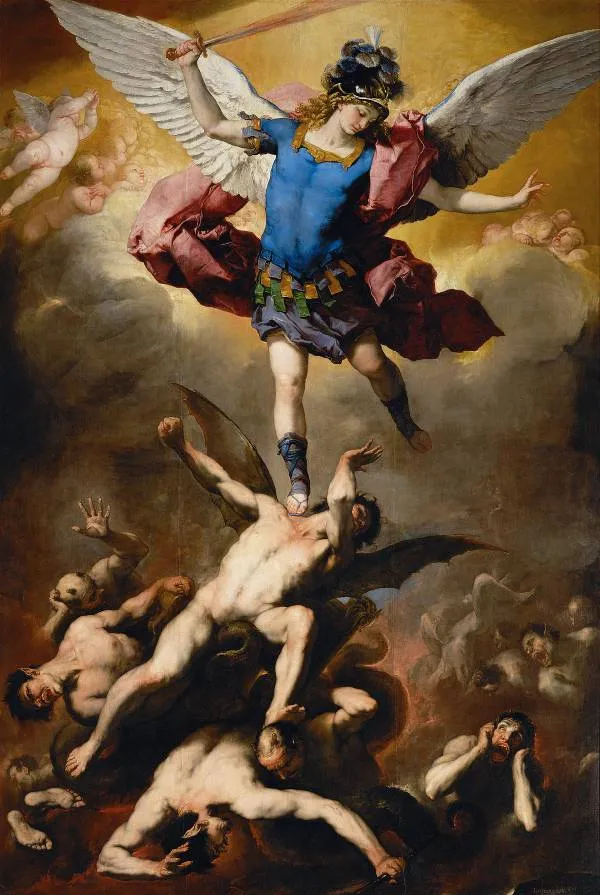
Jehovah’s Witnesses and Seventh-day Adventists claim that Jesus Christ is also the Archangel Michael. Both of these denominations came from the Millerite movement so it’s no surprise that they believe the same thing. William Miller, the founder of the Millerite movement, wrote in an exposition of Daniel 12:11
Michael, in this passage, must mean Christ; He is the great Prince, and Prince of princes” (Evidences From Scripture and History of the Second Coming of Christ [1840], pp. 108, cf. p. 209).
When Jesus did not return in 1844 as William Miller predicted, many of the Millerites returned to their previous denominations or abandoned their faith entirely, but one group continued and later on organized themselves and became known as Seventh-day Adventists, while another group became the Jehovah’s Witnesses. These groups shared similar doctrines; aside from the belief that Michael and Jesus are one and the same person, they also believe in soul-sleep2 and annihilationism 3. And while the official position of the Seventh-day Adventist church today is Trinitarian, (there are some groups within SDA who are non-trinitarians) SDAs too started off as sharing the Arian4 belief that Jesus Christ is not co-equal with God. Some of the SDA pioneers who held this belief include5: James White, Uriah Smith, Joseph Bates, R.F. Cotrell and many more. But SDA belief has some differences about the Arian teaching, hence it was called Semi-Arian6. Semi-Arians believe that Jesus is not the Almighty God, but He is a divine being just not equal with the Father and He has a beginning.
Eventually, the SDA church adopted the Trinitarian belief7 (with some notable differences from the orthodox trinitarian position, but that is a topic for another time) while the Jehovah’s Witnesses stayed true to Arianism, or rather a modified version of it.
The Arians have no problem with praying to Jesus Christ but Jehovah’s witnesses would only pray to Jehovah. But even though the SDAs adopted the Trinitarian doctrine, they still retained the belief that Michael and Jesus Christ are one and the same person. The main difference with Jehovah’s Witnesses is that Jehovah’s Witnesses believe Jesus/Michael is a created being and a lesser divinity than the Father, while SDAs on the other hand believe that Jesus/Michael is a member of the Godhead and co-equal with the Father.
But where did this teaching come from? To my knowledge, the presbyter Arius, who founded Arianism in the 4th century did not believe that Jesus and Michael are one and the same person. But that teaching has got to come from somewhere and that’s what we are going to unravel.
Michael in the Bible
The name Michael is a very old Hebrew name. It comes from the Hebrew מִיכָאֵֽל (mī kāʼēl) meaning “Who is like God?” This name according to the Ancient Hebrew Research Center8 is a shortened form of the question that is asked in Psalm 113:5 “Who is like the LORD our God, the One who sits enthroned on high.” This is a rhetorical question because there is no one like God (Isaiah 46:9). Michael is one of the many theophoric9 names found in the Bible like Gabriel, Daniel, Joel, Raphael, Ezekiel etc.
The first mention of the name Michael is found in Numbers 13:13 and it mentions Sethur, the son of Michael. Sethur is one of the spies sent by Moses to the land of Canaan. There are 16 occurrences10 of the name Michael in the Bible, 11 of which refers to humans and only 5 refer to the angel. Let’s take a look at these five verses and see if it says unequivocally that Jesus and Michael are one and the same person.
Before we proceed, I strongly suggest that you read first the whole chapter of Daniel 10 in order to understand this in full context. It would be better if you could read chapters 10-12 but it would be best if you could read the whole book of Daniel.
Five verses where Michael the Archangel is specifically mentioned in the Bible
-
Daniel 10:13 - But the prince of the Persian kingdom resisted me twenty-one days. Then Michael, one of the chief princes, came to help me, because I was detained there with the king of Persia.
-
Daniel 10:21 - but first I will tell you what is written in the Book of Truth. No one supports me against them except Michael, your prince.
-
Daniel 12:1 - At that time Michael, the great prince who protects your people, will arise. There will be a time of distress such as has not happened from the beginning of nations until then. But at that time your people—everyone whose name is found written in the book—will be delivered.
-
Jude 1:9 - But Michael, the archangel, when contending with the devil and arguing about the body of Moses, dared not bring against him an abusive condemnation, but said, “May the Lord rebuke you!
-
Revelation 12:7 - Then war broke out in heaven. Michael and his angels fought against the dragon, and the dragon and his angels fought back.
There is another reference to the archangel found in 1 Thess. 4:16, It says:
For the Lord himself will come down from heaven, with a loud command, with the voice of the archangel and with the trumpet call of God, and the dead in Christ will rise first.” 1 Thess. 4:16
For many Protestants, they identify Michael as the archangel spoken of in the verse above, and their understanding is that when the Lord returns to the earth, He will be accompanied by myriads of angels as also attested by Jude.
Enoch, the seventh from Adam, prophesied about them: “See, the Lord is coming with thousands upon thousands of his holy ones, to judge everyone, and to convict all of them of all the ungodly acts they have committed in their ungodliness, and of all the defiant words ungodly sinners have spoken against him.” Jude 1:14-15.
Interestingly, this passage from Jude is very similar to an earlier non-canonical book called the “Book of Enoch” and is an almost exact quotation.
And behold! He cometh with ten thousands of His holy ones To execute judgment upon all, And to destroy all the ungodly: And to convict all flesh. Of all the works of their ungodliness which they have ungodly committed, And of all the hard things which ungodly sinners have spoken against Him. 1 Enoch 1:9
Many scholars believe that the Jude passage is referencing the Book of Enoch account or that both of them may have drawn from an earlier unknown source.
Majority of Christians have no issue with identifying the archangel in 1 Thessalonians as Michael but they have in no way identified the archangel as the Lord himself because that is not the orthodox position of Christianity. However for Jehovah’s Witnesses and Seventh-day Adventists, this verse somehow supports their position that Jesus and Michael are one and the same person.
But plain reading of the verses above does not explicitly state that Michael is Jesus in any way whatsoever. Perhaps this is one of those doctrines like the Trinity which isn’t explicitly stated yet the concept is revealed in Scriptures? We shall see if that is the case when we exegete these verses later. Meanwhile, let’s take a look first at how Michael is viewed in the Jewish tradition.
Michael in Judaism
Michael is called the archangel in Jude 1:9. The only other reference to the archangel is in 1 Thess 4:16, referring to the voice of the archangel. In Judaism11 and Eastern Orthodox>12 tradition, there are seven archangels named. Both Judaism and Eastern Orthodox share the following 4: Michael, Gabriel, Uriel and Raphael, while the name of the 3 remaining archangels differ in both traditions. In the Roman Catholic tradition13, there are also 7 archangels but only 3 are named: Michael, Gabriel and Raphael, while in the Protestant tradition only Michael is regarded as the archangel. But the Anglican and Methodist churches recognize four archangels, namely: Michael, Gabriel, Raphael and Uriel.
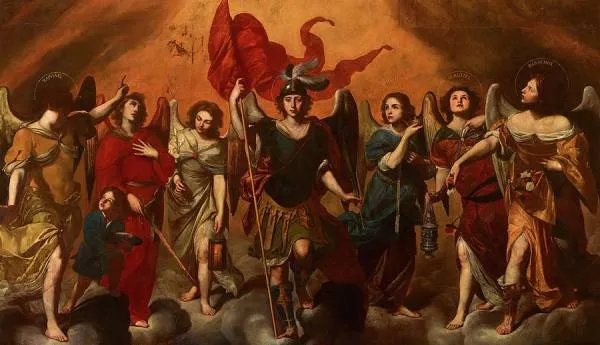
But wait a minute, if there are only 5 occurrences of Michael the Archangel in the Bible (Protestant canon), where did these other names of the archangels come from? And if the term archangel wasn’t even mentioned in the OT, how come Paul mentioned it in 1 Thess. 4:16 as if everybody knows what an archangel is? Shouldn’t he have given an introduction or explanation first of what an archangel is? And also in Jude 1:9, Jude mentioned the event matter-of-factly without any explanation. Could it be that the intended readers of Paul and Jude’s letters were privy to information that we modern readers have no idea about? And could it be that the concept of the archangel and the story of Michael contending with the devil for the body of Moses was already common knowledge during their time? Perhaps that could be the reason why Paul and Jude never offered any background information about it.
So let’s begin by defining what an archangel is.
The word archangel came from the Greek word ἀρχάγγελος (arkhángelos), The prefix arch, meaning chief and angelos meaning messenger. This term obviously did not appear in the Old Testament because the Old Testament was originally written in Hebrew while the New Testament was written in Greek. So how did it get introduced in the first place?
To find out how, we’re going to segue a bit and learn about the Scriptures used in Jesus’ day and we’re also going to learn about the Intertestamental14 literature or 2nd Temple Literature. Because I believe that in order to better understand the context of the biblical writers, one has to have an idea about their historical and cultural background. But if you already know about this or don’t care about it at all, feel free to skip this section (but I hope you won’t).
Growing up as an SDA, I used to naively think that the Scriptures used by the people from Jesus’ time were limited to the same 39 books from the OT (Protestant canon). But that is not the case. The Scriptures that was commonly used during Jesus’ time was the Septuagint15 a.k.a LXX. The term “Septuagint” was derived from the Latin “Vetus Testamentum ex versione Septuaginta Interpretum” which means “The Old Testament from the version of the 70 Translators.”
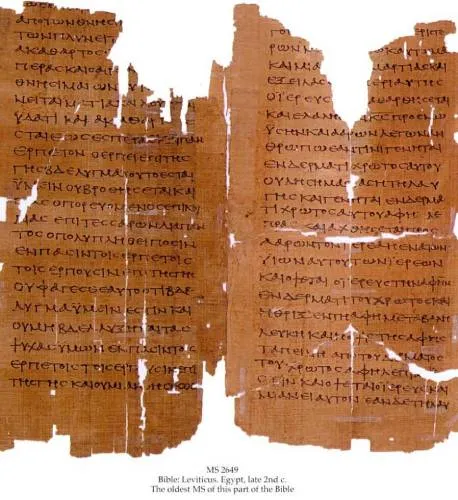
The Septuagint contains all the 39 books of the OT Protestant Bible plus 7 additional books. According to tradition, in the mid-3rd century BC, Ptolemy II Philadelphus commissioned 72 Jewish translators to translate the Hebrew Bible to Greek. The translators worked independently but somehow miraculously produced identical translations of the text. We don’t know the veracity of this tale but what we do know is the Septuagint was widely read before, during and after the time of Jesus. The Masoretic Text16 on the other hand, from which most of the Protestant translations that we use today were derived from, started in the 6th century AD and wasn’t completed until the 10th century AD, more or less 1000 years after Christ.
Aside from the Septuagint and the unknown Hebrew text (proto-Masoretic17) that the Septuagint was translated from, there was also the Samaritan Pentateuch18, a text of the Torah written in Samaritan text. There was also the Dead Sea Scrolls which was first discovered in the 1940s in a cave in Qumran19. The Dead Sea Scrolls is interesting because it contains fragments of most of the Hebrew Bible except Esther and some other apocryphal books (including the War Scroll which would be of interest to our study on the subject of Michael).

Since we’ve briefly discussed the Scriptures used during Jesus’ time, let’s then take a look at the Intertestamental period (between Testaments) as referred to by Protestants or the Deuterocanonical period as called by Catholics and Orthodox.
The Intertestamental period20 covers the time period of the prophet Malachi (around 400 BC) up to John the Baptist’s time in the 1st century AD. This is commonly referred to as the “400 years of silence”21 by Protestants because they believe that during these 400 years, God has ceased speaking through prophets and no inspired writing came about until the time of the coming of the Messiah. For Jews on the other hand, this is the period where much of the Intertestamental literature was produced. Aside from the Septuagint, Dead Sea scrolls and Samaritan Pentateuch; the Pseudepigrapha22, Apocrypha23 and Wisdom Literature24 were also produced during this time.
Now that we’ve had a little background information about the Intertestamental Period and Intertestamental Literature, let’s go back to our main topic, Michael.
Michael is highly regarded by the Jews. Not only do they see Michael as an archangel, he is also Israel’s protector, advocate, high priest and prince.25 For example, in the book of Tobit, Michael is one of the seven angels who stands in the presence of God (Tobit 12:15). And in the non-canonical book of Enoch, Michael was said to be the angel that will cast the fallen angels into the abyss to execute judgment on them (1 Enoch 10:4, 18:1-2). Michael is also referred to as the merciful and long-suffering (1 Enoch 40:9). Michael also appears in a manuscript found in the Dead Sea scrolls called The War of the Sons of Light Against the Sons of Darkness or simply known as the War Scroll. In this book Michael was described as the “Prince of Light who will defeat the devil Belial and establish his kingdom”26
This is the day appointed by Him for the defeat and overthrow of the Prince of the kingdom of wickedness, and He will send eternal succour to the company of His redeemed by the might of the princely Angel of the kingdom of Michael. With everlasting light He will enlighten with joy [the children] of Israel; peace and blessing shall be with the company of God. He will raise up the kingdom of Michael in the midst of the gods, and the realm of Israel in the midst of all flesh. (1QM 17.5–9)27
And the Prince of Light Thou hast appointed from ancient times to come to our support; [all the sons of righteousness are in his hand], and all the spirits of truth are under his dominion. But Belial, the Angel of Malevolence, Thou hast created for the Pit; his [rule] is in Darkness and his purpose is to bring about wickedness and iniquity. All the spirits of his company, the Angels of Destruction, walk according to the precepts of Darkness; towards them is their [inclination] (1QM 13.10)28
As you can see, not only Michael was mentioned here but also Belial. Belial is a demon/fallen angel mentioned in 2 Corinthians 6:15.
What harmony is there between Christ and Belial? Or what does a believer have in common with an unbeliever? 2 Cor. 6:15
Could it be that perhaps the Jewish writers of the War Scroll are actually referring to the pre-incarnate Christ when they wrote this? If that is the case, then the Seventh-day Adventists and Jehovah’s Witnesses are correct that Jesus and Michael are indeed one and the same person. But before we come to any conclusion, we will look at the other references and hopefully we will be able to determine the correct answer.
In another apocryphal book, The Testament of Abraham, Michael is regarded as the one who escorts the souls of the dead to the judgment seat of God and he also has a role in the judgment of the dead.29
Michael is also mentioned in another apocryphal book called The Life of Adam and Eve30. In this book, Michael was tasked with preventing Adam and Eve from accessing the tree of life in the Garden of Eden. Michael was also assigned by God to protect Adam and Eve after they were expelled from Paradise. Michael is also depicted as a mediator between God and humanity. He intercedes on behalf of Adam and Eve, pleading their cause before God and asking for their forgiveness.
In this book, it is mentioned that the devil is angry with Adam because the Lord made all the angels to worship Adam because he was made in the image of God. Michael led in the worship of Adam but the devil refused. When Adam died, Michael instructed Seth to prepare Adam’s body for burial while he transported Adam’s soul to Paradise and he promised Seth that Adam’s soul would return to his body on the day of resurrection and he will live forever in the presence of God.
An expanded account of the Nephilims that was mentioned in Genesis 6:1-4 can also be found in the Book of Enoch. The angels called Watchers in the book took human wives and their union produced the Nephilims, a hybrid of human and angelic beings of great stature. The Watchers also taught the humans the art of warfare, astrology, the use of cosmetics and other arcane stuff. This caused great evil in the land that’s why God destroyed the evil inhabitants of the earth by flood. As for the Watchers, God sent Michael to bind the Watchers along with their leader named Samyaza/Shemihaza.
And to Michael [the Most High] said, “Go, Michael, bind Shemihazah and the others with him, who have mated with the daughters of men, so that they were defiled by them in their uncleanness. And when their sons perish and they see the destruction of their beloved ones, bind them for seventy generations in the valleys of the earth, until the day of their judgment and consummation, until the everlasting judgment is consummated. (1 Enoch 10:11–12)
In another apocryphal book titled 3 Baruch, Michael is identified with traits that modern Christians would attribute to Christ.
Michael is identified as the one who holds the keys of the kingdom of heaven.
And the angel took me and led me thence to a fifth heaven. And the gate was closed. And I said, Lord, is not this gate-way open that we may enter? And the angel said to me, We cannot enter until Michael comes, who holds the keys of the Kingdom of Heaven; 3 Baruch 11:1,2
Michael is identified as the commander of the angels
And he said to me, Even now Michael, the commander of the angels, comes down to receive the prayers of men. And behold a voice came, Let the gates be opened. And they opened them 3 Baruch 11:4,5
Michael as the mediator between God and man
And in that very hour Michael departed, and the doors were closed. And there was a sound as thunder. And I asked the angel, What is the sound? And he said to me, “Michael is even now presenting the merits of men to God. Baruch 14:1,2
Another reference to Michael that can be found in Jude 1:9 is believed by some, including Origen31, to have come from another apocryphal book called the Assumption of Moses32 a.k.a Testament of Moses. This book contains the supposedly last instructions of Moses to Joshua, his successor. But the dispute over the body of Moses’ account that is found in Jude is not found in surviving copies of this apocryphal book. Biblical scholars therefore think that perhaps some portions of the original manuscripts may have been lost or that the account was taken from other sources not found in any other Apocrypha. Which brings us to another source material for Jewish traditions, and that is the Talmud and the Midrash.
The Talmud
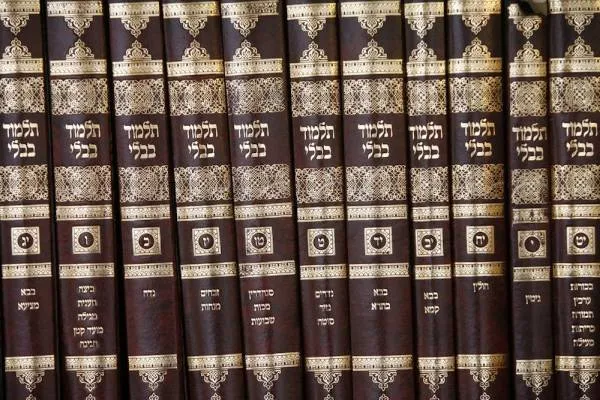
The Talmud is a collection of writings that covers the full gamut of Jewish law and tradition, compiled and edited between the third and sixth centuries.33
The Talmud is considered sacred by most Jews but is not on the same level of authority as the Scriptures. Michael is also referenced in the Talmud.
In Talmud Bavli Sanhedrin 38b, Michael is described as one of the four ‘angels of mercy’ who intercede on behalf of humanity in the heavenly court. The other three angels are Gabriel, Raphael, and Uriel.
In Talmud Bavli Avodah Zarah 3b, Michael is depicted as one of the angels who accompanies God in his judgment of the nations. The text states that Michael speaks in defense of the people of Israel and presents their good deeds before God.
The Midrash
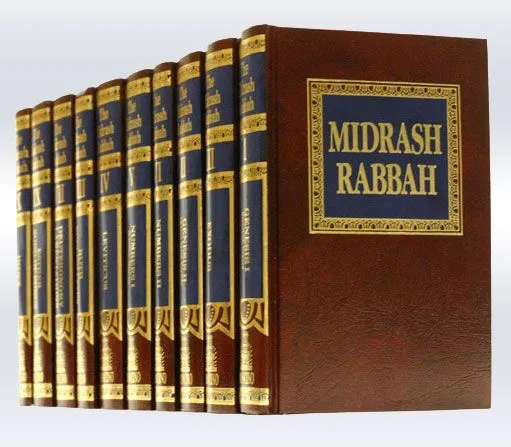
The Midrash “is an interpretive act, seeking the answers to religious questions (both practical and theological) by plumbing the meaning of the words of the Torah.34”
In other words, think of Midrash as Jewish commentaries that attempt to explain certain passages in Scripture or aims to solve apparent discrepancies or inconsistencies in Scriptures.
The archangel Michael is also referenced in the Midrash.
In Midrash Rabbah Genesis 68:10, Michael is identified as one of the angels who accompany God on his visits to Abraham. According to the text, Michael is tasked with announcing the good news of Sarah’s impending pregnancy.
In Midrash Tanhuma Vayakhel 6, Michael is portrayed as an advocate for the people of Israel in the heavenly court. The text states that Michael intercedes on behalf of Israel, reminding God of the people’s merits and beseeching him to show them mercy.
In Midrash Tadshe 23, Michael is depicted as the guardian of the Garden of Eden. The text states that Michael guards the garden with a flaming sword, preventing anyone from entering.
Angel Worship and the Cult of Michael
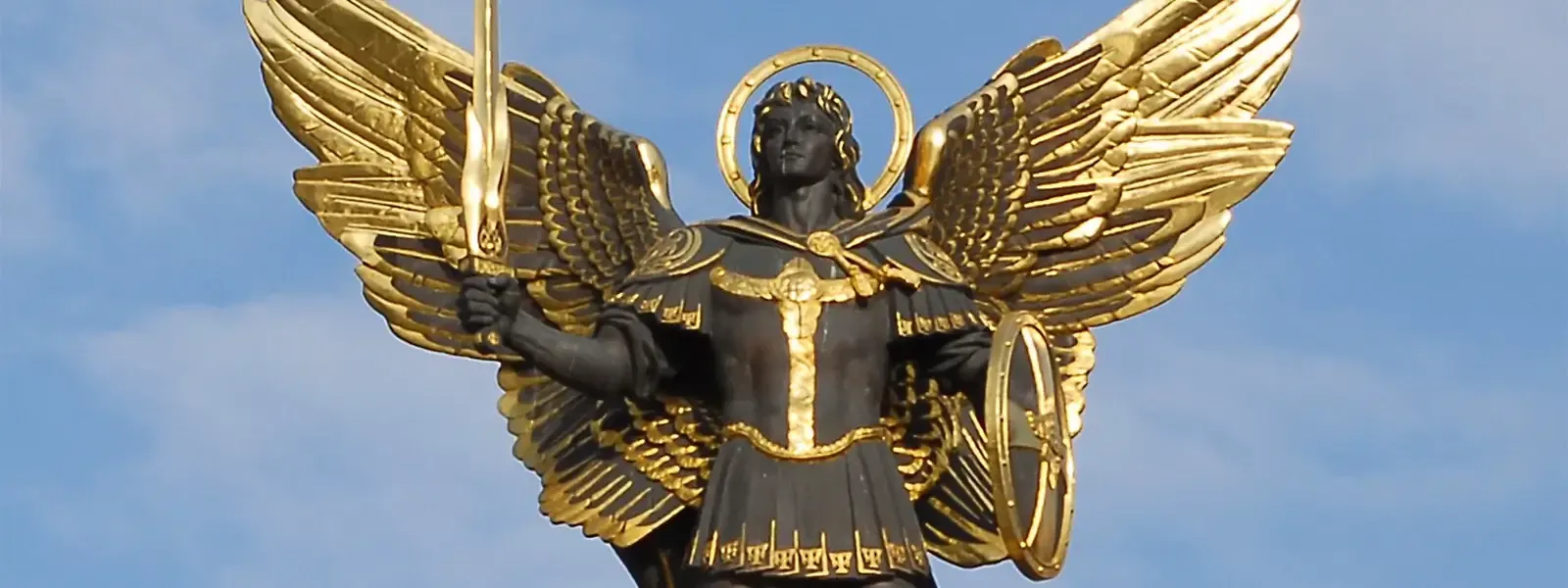
Since Michael is an exalted figure in Judaism, Some groups within Judaism and even in Christianity (Christianity started out as a Jewish sect) have resorted to elevating Michael and other angels to divine status. That is why the apostle Paul warned in Colossians 2:18 about the worship of angels
Do not let anyone who delights in false humility and the worship of angels disqualify you. Such a person also goes into great detail about what they have seen; they are puffed up with idle notions by their unspiritual mind. Col. 2:18
Rabbinic literature also prohibits the worship of Michael or any other angels because some Jews of that day have turned it into a practice.
When distress comes upon a man, he should not cry out to either Michael or to Gabriel; instead, he should cry out to me, and I will answer him immediately. That is what is written: ‘Everyone who calls on the name of the Lord shall be saved’. (j. Berakhoth 9:13)
The practice of calling on to Michael, Gabriel or any other angel for help in time of need is discouraged in Judaism but encouraged in Catholicism as we shall see later.
These are just some of the references to Michael found in the Intertestamental Literature. While these are not considered as authoritative by Protestants, it gives us a glimpse of what the average Jew in Jesus’ day believes in.
We don’t know for sure how the Jews got their traditions about Michael and the other traditions that are not found in the Bible. According to them, Moses gave them the Written Torah, that is the first five books of the Bible and then he also passed down orally the Oral Torah to Joshua and Joshua to the the elders and in turn they passed to their descendants in an unbroken chain down to the rabbis. The final codification of this oral law was finished in the 3rd century AD and is called the Mishnah35.
This is authoritative for the Jews, but for Christians, we do not recognize this as authoritative since we cannot ascertain which of these are transmitted from Moses or which are later additions or embellishment.
Even Jesus said that Jews have traditions that they have inherited from their elders that are clearly of human origin
You have let go of the commands of God and are holding on to human traditions.” And he continued, “You have a fine way of setting aside the commands of God in order to observe your own traditions!” Mark 7:8-9
Clearly the Jews recognize that Michael is not just an ordinary angel, as we have seen, and that they have given to Michael some of the attributes that Christians have given to Jesus Christ. Perhaps Michael is all that to the nation of Israel, but Michael and his role for the nation of Israel is just a type for the role of Jesus to the whole world. I guess it’s no surprise that the Jews may have misattributed the role of Jesus to Michael because the Jews do not recognize Jesus as the Son of God or as the Messiah. The Bible says,
He was in the world, and though the world was made through him, the world did not recognize him. John 1:10
But one thing is certain, the Jews do not believe that Jesus Christ and Michael the archangel are one and the same person. For them, Michael is the highest archangel and worthy of reverence while Jesus Christ is just a man claiming to be the Son of God and king of the Jews but was crucified for it.
VERDICT: For the Jews, Jesus and Michael are not the same person